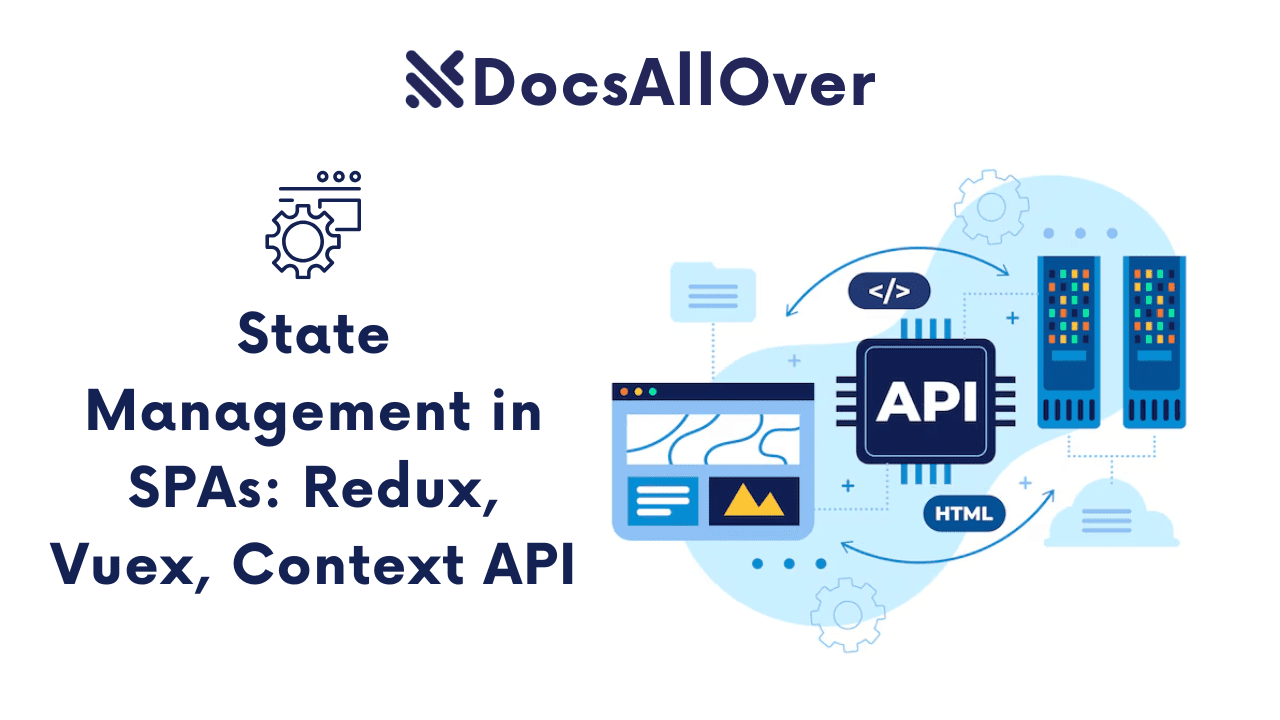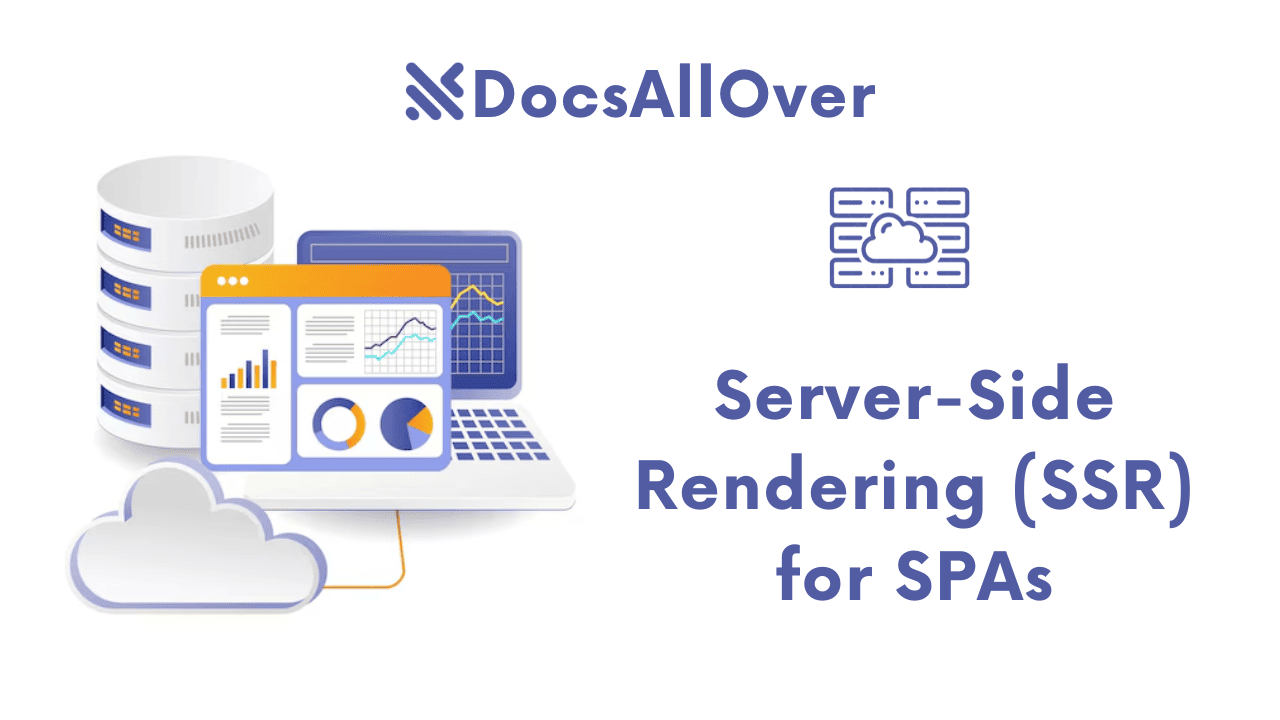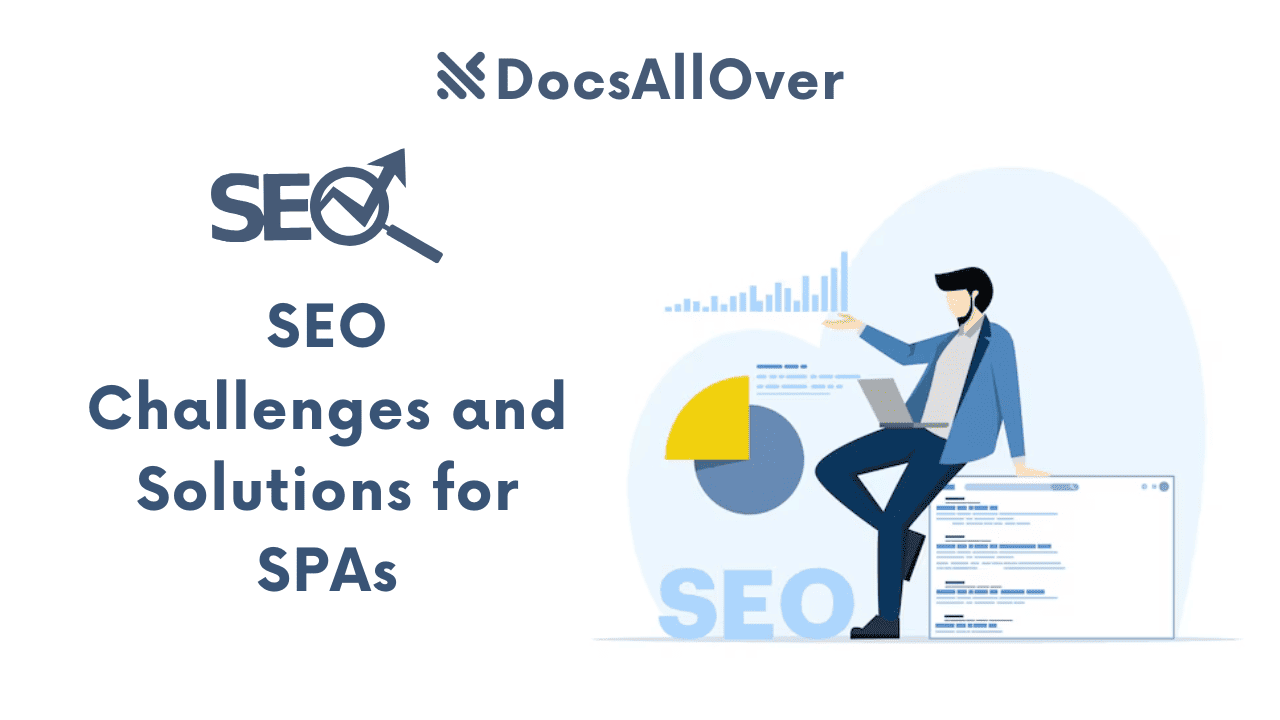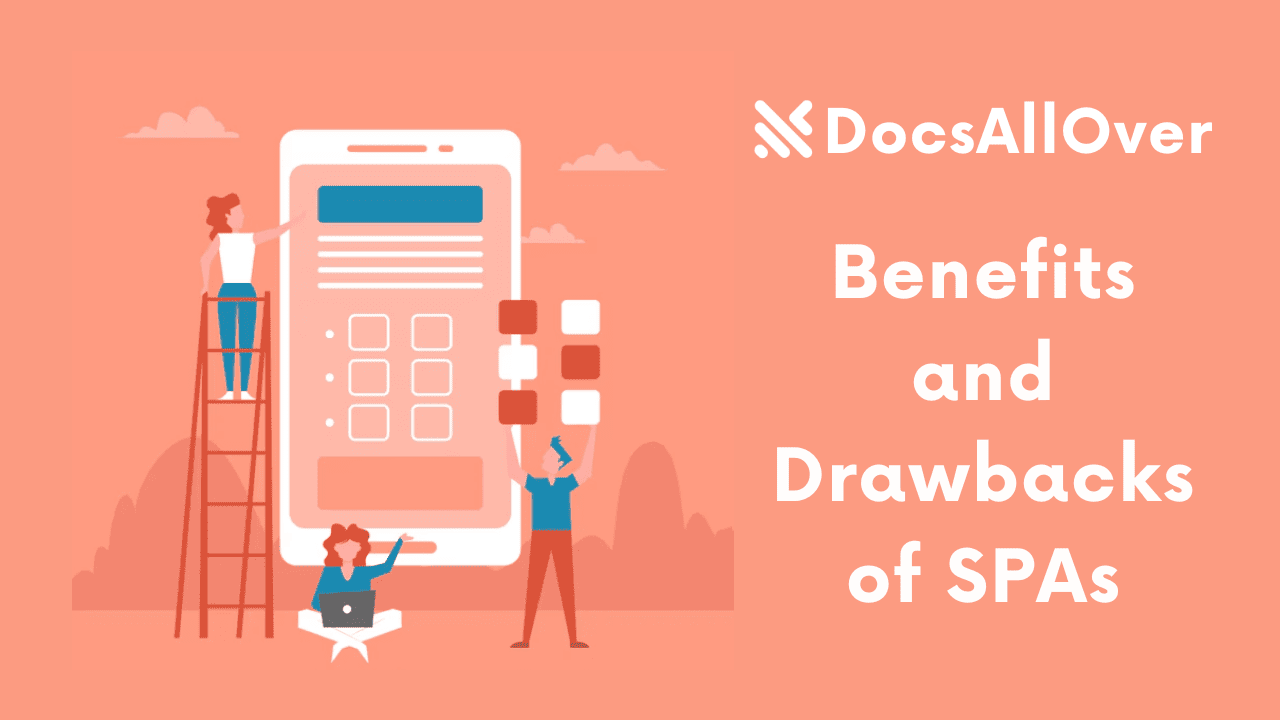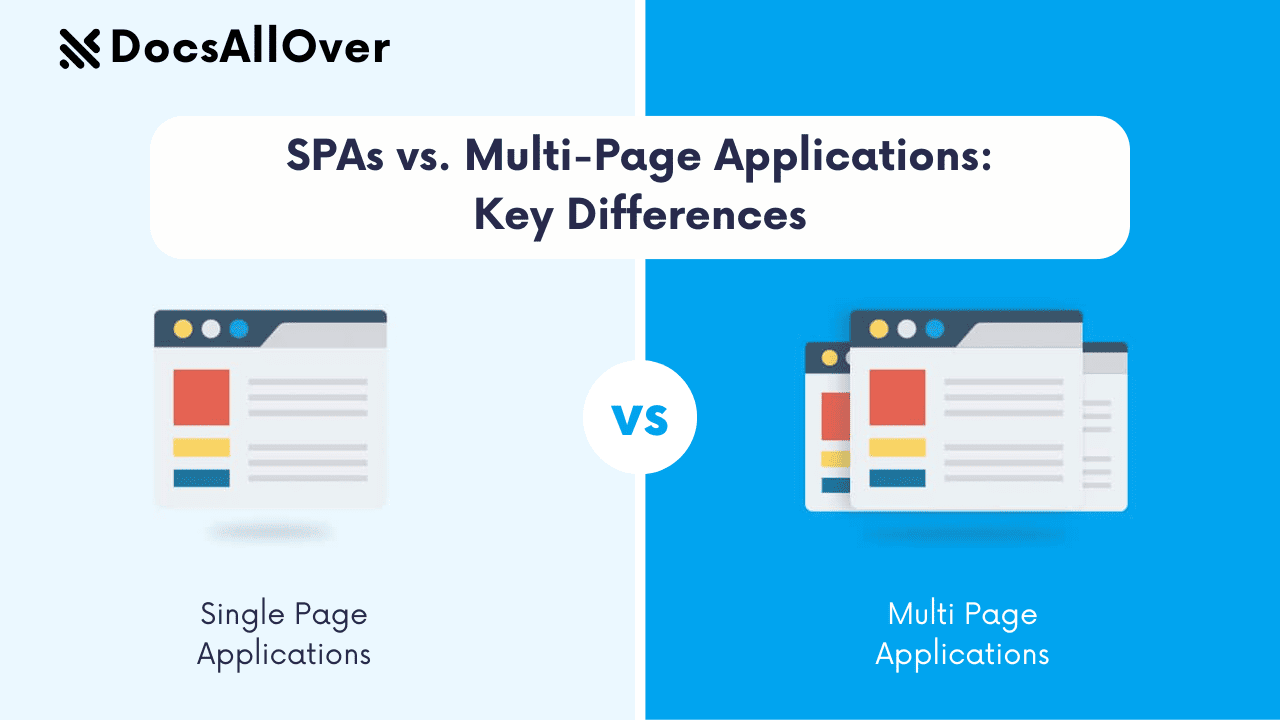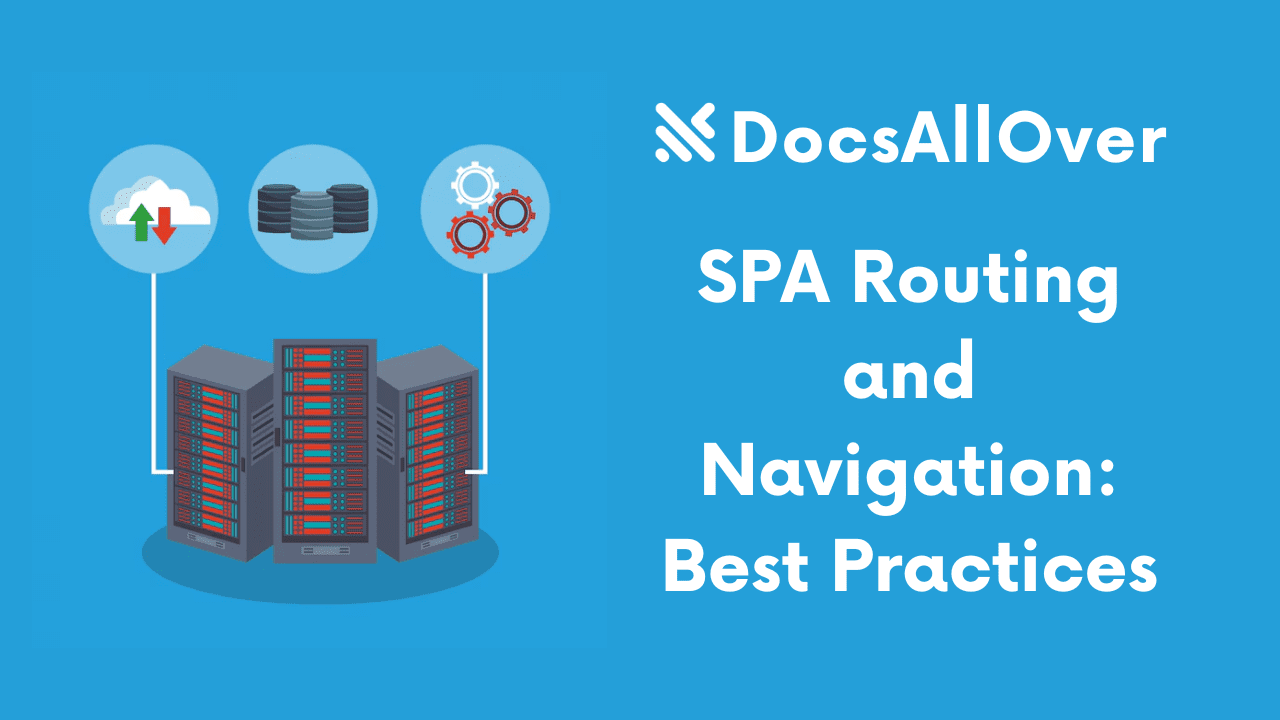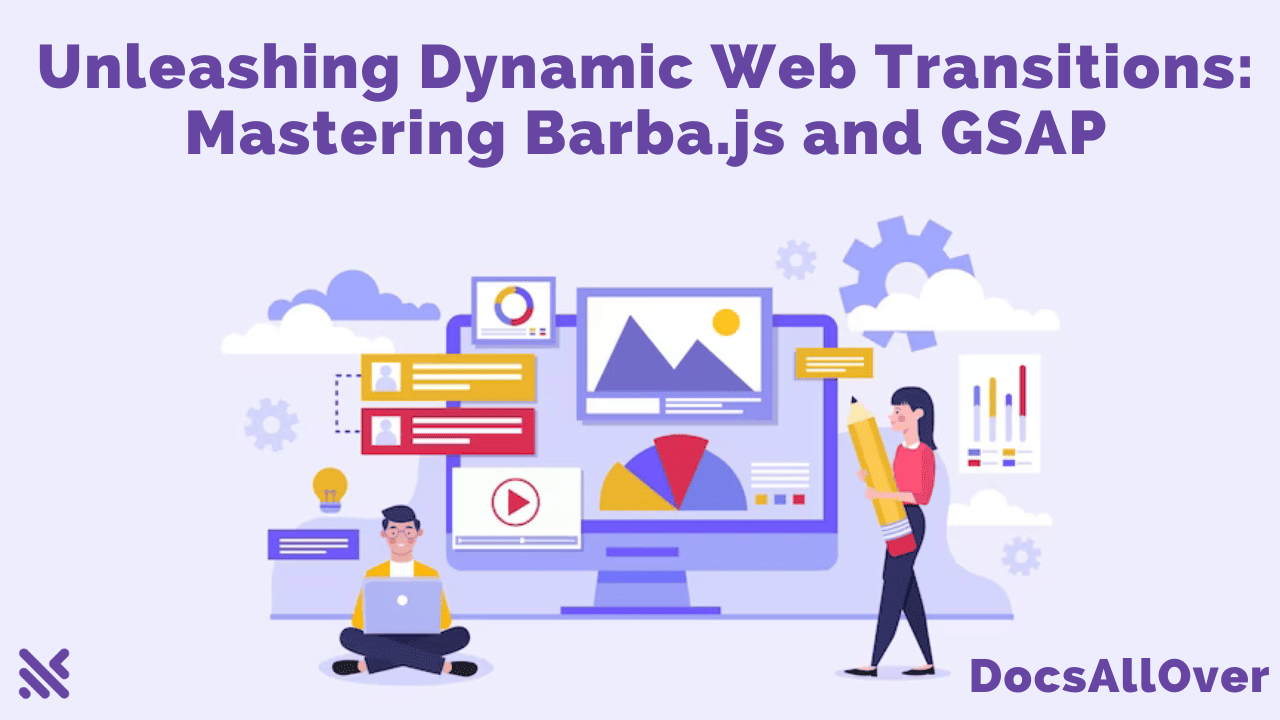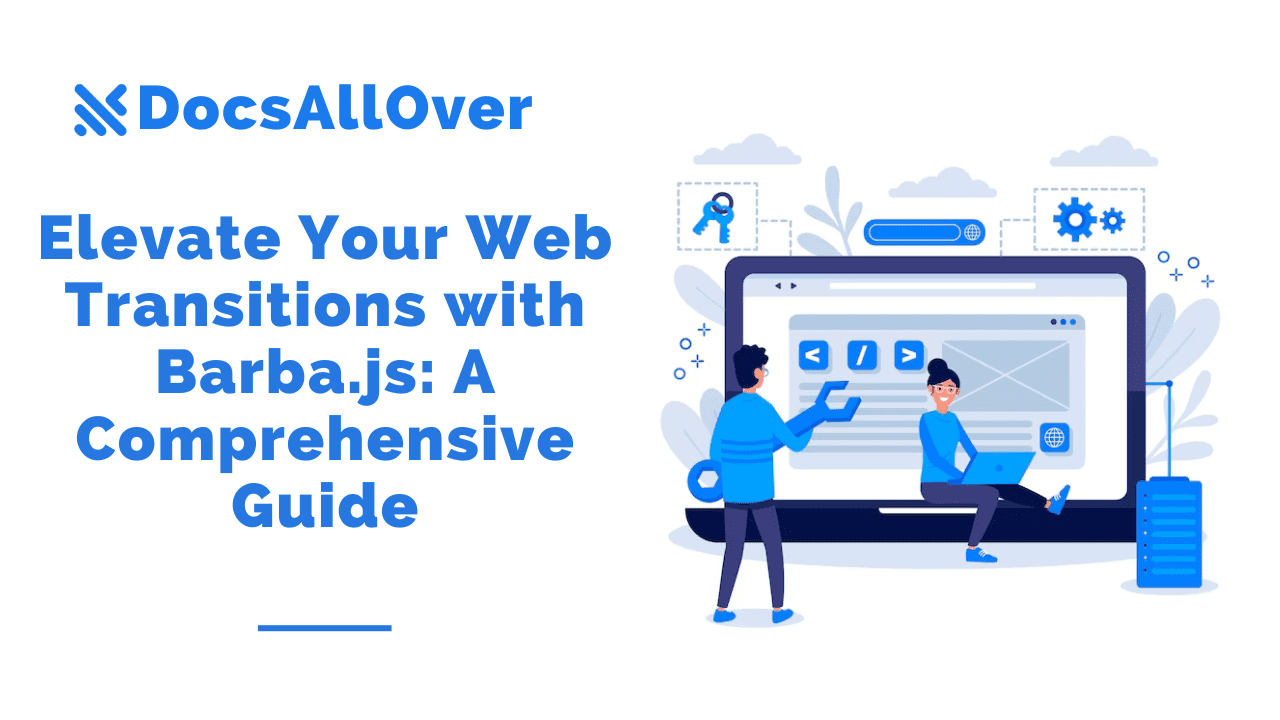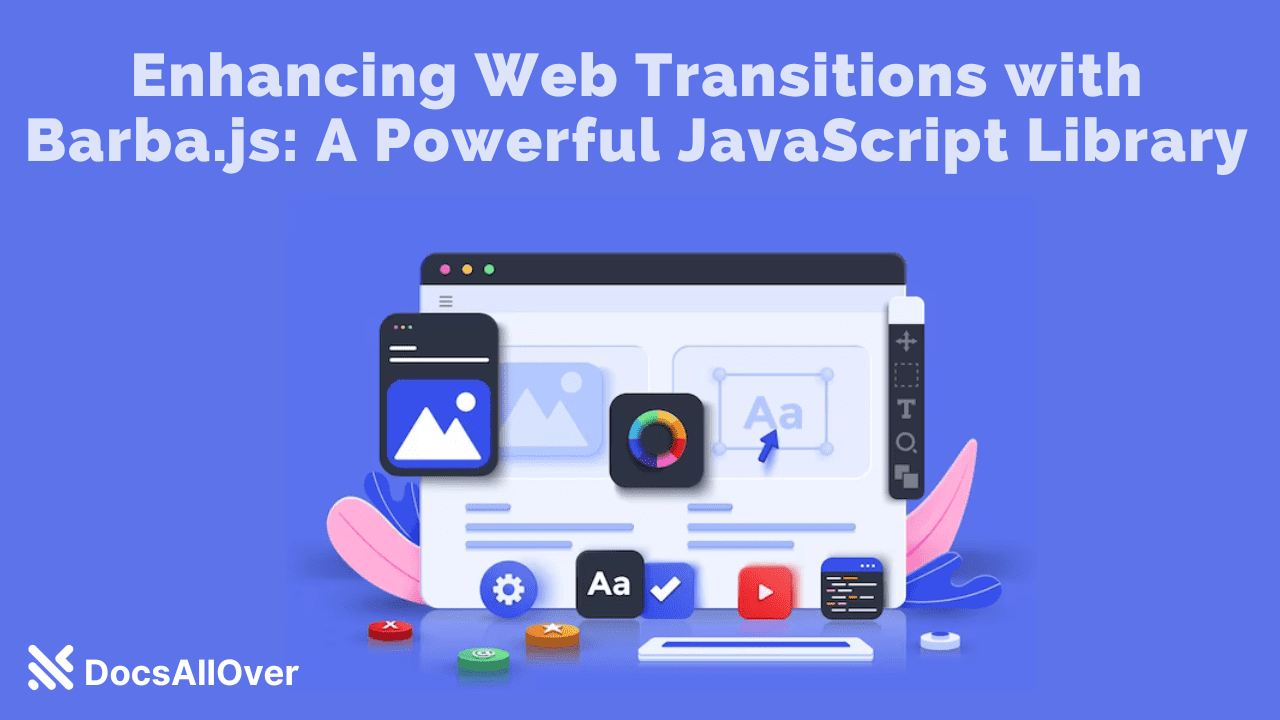Building a Single-Page Application (SPA) with a Frontend Framework
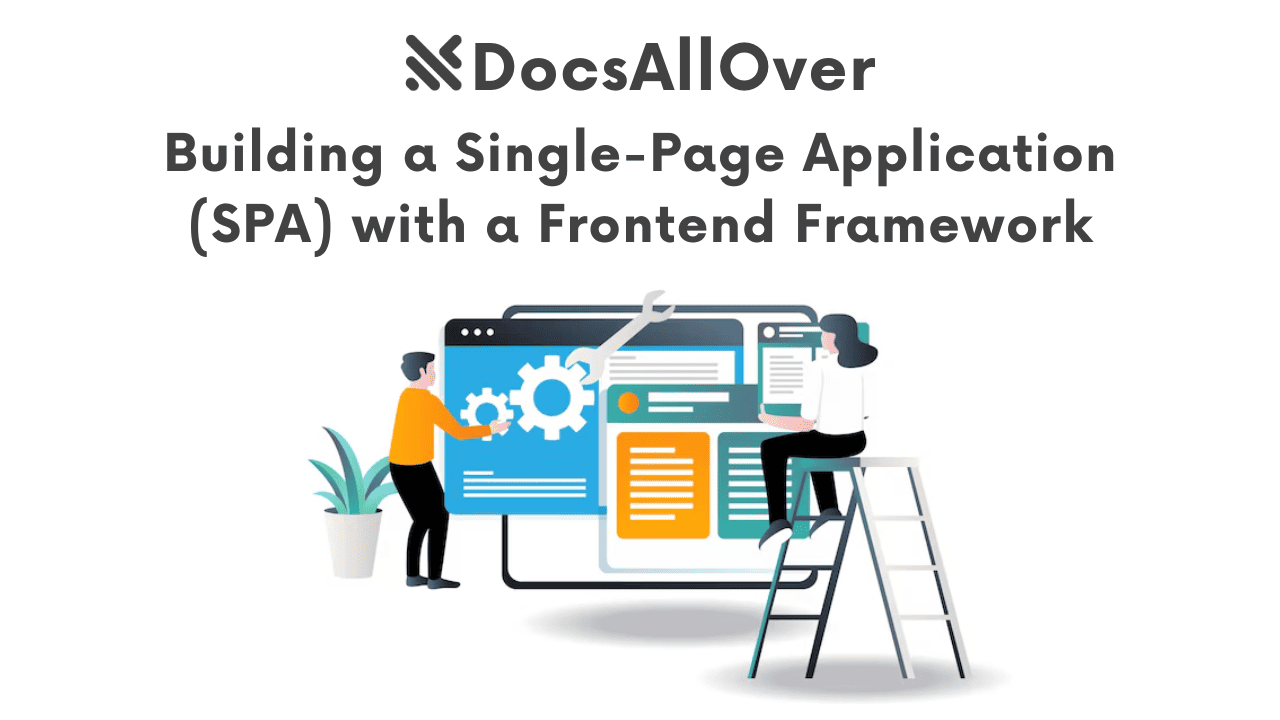
The Modern Web Experience
In the early days of the web, every single click on a link meant a full-page reload. This traditional approach, known as a Multi-Page Application (MPA), led to a slow and often frustrating user experience. The constant flashing and waiting for the server to send a new HTML document made websites feel clunky and unresponsive.
A Single-Page Application (SPA) is a modern solution that moves beyond this. It's a web app that loads a single HTML file and then dynamically rewrites the content on the fly as the user interacts with it. This is how apps like Gmail, Google Maps, and Twitter feel so fast and fluid. When a user clicks a button or navigates to a new section, the application's JavaScript intercepts the request, fetches only the necessary data, and updates the relevant parts of the page without a full refresh.
While you could build a basic SPA with plain JavaScript, the complexity of managing a large, dynamic user interface quickly becomes overwhelming. This is where modern frontend frameworks become essential. Tools like React, Vue.js, and Angular provide a structured, component-based approach that makes it easy to manage application state, handle user interactions, and build reusable UI elements. They provide the necessary scaffolding to build a scalable and maintainable SPA.
The goal of this detailed guide is to give you a clear roadmap for building your own SPA. We'll explore the core concepts and essential tools, and then walk through a practical, step-by-step example using one of the leading frameworks to get you started on your own project.
The Core Concepts of a Single-Page Application
Single-Page Applications rely on a few core concepts that fundamentally change how a web page functions compared to traditional websites.
Client-Side Rendering (CSR)
The key to an SPA's speed is Client-Side Rendering (CSR). In a traditional Server-Side Rendered (SSR) website, the server generates a complete HTML page for every request. With a CSR-based SPA, the server's role is different. It sends the browser a single, minimal HTML "shell" along with all the required JavaScript, CSS, and other assets. The browser then takes over, running the JavaScript to build the entire user interface and fetch any necessary data from an API. All subsequent content updates and navigations are handled entirely by the browser, which fetches only the data it needs and dynamically updates the page. This approach offers faster perceived performance because users don't have to wait for the server to process each request, a more interactive feel with instant updates, and less server load since the heavy lifting is moved to the client.
Dynamic Routing
In a classic website, each URL corresponds to a unique file on the server. SPAs achieve a similar navigation experience using dynamic routing. This process uses a JavaScript router library that intercepts browser navigation events and manipulates the browser's URL using APIs like the History API. When a user clicks a link, the router prevents a full page reload. Instead, it changes the URL in the address bar and then updates the on-screen content by rendering the appropriate component for that new URL. This gives the user the illusion of navigating between different pages without ever leaving the initial HTML document.
The Component-Based Architecture
At the heart of any SPA framework is a component-based architecture. This principle breaks down the user interface into small, independent, and reusable blocks of code called components. For instance, an application's homepage might be composed of a Header component, a Sidebar component, and a MainContent component. Each component is a self-contained unit that encapsulates its own logic (JavaScript), styling (CSS), and data. This modular approach promotes a clean separation of concerns, making the codebase much easier to manage, maintain, and scale for complex applications.
Choosing Your Frontend Framework
React: The Flexible Library
React is a JavaScript library for building user interfaces, not a full-fledged framework. Developed by Facebook (now Meta), its core is a component-based model that lets you create reusable UI elements. React is known for its flexibility and massive community support. It has a vast ecosystem of third-party libraries for virtually every task, from routing (React Router) to state management (Redux). Its use of JSX, a syntax extension that allows you to write HTML-like code within JavaScript, is a key feature that simplifies component development.
Vue.js: The Approachable Framework
Vue.js is often described as a progressive framework that's approachable and easy to learn. Its simplicity and clear documentation make it a favorite for beginners and developers who want a quick, smooth start. Vue's core library is streamlined but still includes essential tools like its own routing and state management libraries (Vue Router and Pinia/Vuex), providing a great balance between power and simplicity. A defining feature is its use of Single-File Components (.vue files), which neatly bundle a component's HTML, CSS, and JavaScript into one organized file.
Angular: The Opinionated Platform
Angular is a comprehensive, full-featured framework maintained by Google. It's often called "opinionated" because it provides a highly structured, "batteries-included" approach. Angular gives you a clear and consistent way to build everything from the ground up, including its own routing, state management, and build processes. This robust structure makes it an excellent choice for building large-scale, enterprise-level applications where a standardized, maintainable codebase is a top priority.
The Building Blocks of an SPA
To build a single-page application (SPA), you'll use three key building blocks: components, state management, and routing. Together, these elements enable dynamic, interactive web experiences.
Components: Reusable UI Pieces
Components are the fundamental, reusable building blocks of an SPA. They are self-contained units of code that combine a specific part of the user interface (UI) with its own logic and styling. To build a complex UI, you nest components inside each other. Communication between these components is crucial for them to work together. Props (short for properties) are how a parent component passes data down to a child component. A child component can then send information back up to its parent using events and callbacks. This one-way data flow (props down, events up) creates a clear and predictable structure.
State Management
State is the dynamic data that changes over time in your application, like a user's logged-in status or the items in a shopping cart. Managing this data is a core task in SPA development.
There are two main types of state:
- Local component state is data that's only relevant to a single component, such as the text a user has typed into a search box. It's simple to manage and doesn't need to be shared.
- Global state is data that needs to be shared across many different components. For larger, more complex applications, a dedicated global state management solution like Redux (for React) or Pinia/Vuex (for Vue) is essential. These tools create a single source of truth for the entire application's data, ensuring consistency and making the app easier to debug and scale.
Routing
A router library is what allows your SPA to change the URL and display different content without a full page refresh. You'll install a router library (e.g., Vue Router or React Router) and configure it by defining a list of routes. A route is an object that maps a specific URL path (e.g., /about) to a particular component (e.g., About.vue). When a user clicks a link, the router intercepts the action, updates the URL, and renders the corresponding component, giving the illusion of a traditional multi-page website. This is what makes navigation in an SPA feel so fast and seamless.
Practical Example: Building a Simple SPA with Vue.js
Let's put these concepts into practice by building a basic SPA with Vue.js. We'll use the modern build tool Vite to get up and running quickly.
Project Setup with Vite
Vite is a fast and lightweight build tool that provides a great development experience.
- Step 1: Open your terminal and run the following command. This will prompt you to name your project and select the framework and language.
Choose a project name (e.g.,
my-vue-spa), selectVueas the framework, andJavaScriptas the language. - Step 2: Navigate into your new project folder and install the dependencies:
Your project's file structure will be clean and intuitive, with a
srcdirectory containing your mainApp.vuecomponent, amain.jsentry file, and anassetsfolder.
Creating Core Components
We'll create two simple components to act as our "pages." In the src/components directory, create two new files: Home.vue and About.vue.
Configuring the Router
To enable dynamic routing, we'll use Vue's official router library, Vue Router.
- Step 1: Install Vue Router.
- Step 2: Configure the router. In the
srcdirectory, create a new folder calledrouterand a file inside it namedindex.js. This is where we'll define our routes.
src/router/index.js
Linking It All Together
Now, we need to connect the router to our main application. We'll use the
In your src/main.js file, make sure the router is imported and used.
src/main.js
Next, update your App.vue file to include the navigation links and the router view.
src/App.vue
Now, when you run npm run dev, you'll see a simple navigation bar. Clicking the links changes the content below without a page refresh, demonstrating your SPA in action!
Demonstrating State (A Simple Counter)
To show how state works without a page reload, let's add a simple counter to the Home.vue component. We'll use Vue's ref function to create a reactive variable.
src/components/Home.vue (Updated)
When you run the app, you'll see a button that increments a number on the screen. This happens instantly because the state change is handled entirely by the component's JavaScript, without any server request.
The Modern SPA Developer's Toolkit
Building a Single-Page Application (SPA) isn't just about writing code; it's also about using the right tools to manage that code. A modern SPA developer relies on a powerful toolkit to streamline the development process.
Build Tools
Build tools are essential for transforming your source code into a format that browsers can understand and run efficiently. The two most popular tools are webpack and Vite. They serve several key purposes:
- Bundling: Modern SPA code is often broken down into many small JavaScript modules. A build tool bundles all of these files into a single (or a few) optimized files to reduce the number of HTTP requests the browser has to make.
- Transpiling: Most developers write code using modern JavaScript syntax (ES6+) or languages like TypeScript, which might not be fully supported by all browsers. Build tools automatically transpile this code into older, more widely compatible JavaScript.
- Optimizing: They can also perform tasks like minifying code (removing unnecessary characters), compressing images, and optimizing assets to ensure the final application is as fast as possible.
Package Managers
Package managers are the tools you use to manage your project's dependencies—the external libraries and frameworks your application relies on. npm (Node Package Manager) and yarn are the two most widely used package managers. They allow you to:
- Install Libraries: With a simple command (e.g.,
npm install react), you can add a library to your project and download all of its necessary files. - Manage Dependencies: These tools keep a record of all the packages your project needs in a
package.jsonfile. This makes it easy for other developers to set up the project by simply runningnpm install.
Development Environment
A modern development environment is designed to provide a fast and comfortable coding experience. Key features include:
- Local Development Server: This is a lightweight server that runs on your computer, allowing you to view and test your application locally in a browser without having to deploy it.
- Hot Module Replacement (HMR): This powerful feature automatically injects updated code into your running application without forcing a full page refresh. This means you can see your changes instantly, preserving the current state of your application and significantly speeding up your workflow.
- Live Reloading: A more basic version of HMR, live reloading automatically refreshes the entire page in your browser whenever you save a change to your code.
Key Considerations and Best Practices
Performance
While SPAs feel fast after the initial load, that first load can be a challenge. If the initial bundle is too large, users might experience a long wait time. To combat this, you can use two main strategies:
- Lazy Loading Components: This is a technique where you defer the loading of certain components until they're actually needed. For example, the code for the "About Us" page doesn't need to be loaded when a user first lands on the homepage. By lazy loading, you can significantly reduce the initial download size and make your app feel faster from the start.
- Code Splitting: This goes hand-in-hand with lazy loading. Build tools like Vite and webpack can automatically "split" your code into smaller chunks. The browser only downloads the chunks of code required for the current view, improving initial load times.
SEO Challenges and Solutions
Traditional search engine crawlers were designed to read static HTML. Since a Client-Side Rendered (CSR) SPA delivers a nearly blank HTML file and relies on JavaScript to build the content, search engines could struggle to index the site properly. This is the traditional SEO problem with SPAs. While modern crawlers like Google's are better at executing JavaScript, it's still not a perfect solution.
To make your SPA more SEO-friendly, you can use these solutions:
- Server-Side Rendering (SSR): This is a hybrid approach where the server renders the initial HTML for a page on each request. The user gets a fully rendered page to start, which is great for SEO and initial load performance. The SPA's JavaScript then "hydrates" the page, taking over to handle subsequent dynamic updates.
- Prerendering: This is a build-time process where you generate static HTML files for each route of your application. This is ideal for sites with a limited number of static pages, as the search engine crawler can easily read the content.
Accessibility (a11y)
Building an accessible SPA means making sure it can be used by people with disabilities, particularly those who rely on screen readers. Because SPAs dynamically change content, they can sometimes confuse assistive technologies. To ensure your SPA is accessible:
- Semantic HTML: Always use correct semantic HTML elements (e.g.,
<nav>,<button>,<label>). This gives screen readers a clear understanding of your page's structure and function. - ARIA Attributes: Use Accessible Rich Internet Applications (ARIA) attributes (e.g.,
aria-label,aria-live) to provide extra context to screen readers about dynamic changes or non-standard elements. - Focus Management: When content changes, it's crucial to programmatically manage the user's focus. For example, when a modal window opens, the keyboard focus should automatically move to the modal so the user doesn't get lost. When the modal closes, the focus should return to where it was previously.
Your journey into building dynamic web apps starts now. Armed with this knowledge, your next step is to choose a framework that aligns with your goals and start a new project. Don't be afraid to experiment with the practical example provided, modifying it to build your own simple application. This hands-on experience is the best way to solidify your understanding and get comfortable with the tools.

